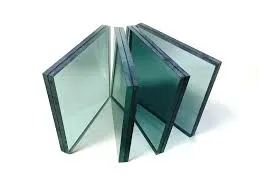The Beauty of Pressed Glass Patterns
Pressed glass, a fascinating medium that marries functionality with artistry, holds a unique place in decorative arts. Characterized by intricate designs created through the use of molds, pressed glass patterns illuminate our tables, shelves, and homes with their elegant forms and historical significance. From the Victorian era to modern-day creations, the allure of pressed glass patterns enchants collectors and enthusiasts alike.
Historical Context of Pressed Glass
Pressed glass emerged prominently in the 19th century, coinciding with the Industrial Revolution, which enabled manufacturers to produce decorative objects en masse. This innovation allowed for exquisite designs at prices affordable to the middle class, thus expanding the reach of beautiful glassware beyond the wealthy elite. The early factories in England and America set the stage for pressed glass production, implementing machinery to create items that closely mimicked the detailing of handcrafted glass, but at a fraction of the cost.
The Victorian era was a particularly fertile time for pressed glass, with intricate patterns evolving into distinct styles. Notable manufacturers like the Boston and Sandwich Glass Company, Fenton Glass, and the New England Glass Company contributed to a stunning array of patterns that were both practical and aesthetically appealing. These included everything from utilitarian items like plates and bowls to decorative vases and candle holders that enjoyed a place of honor in middle-class homes.
Recognizing Pressed Glass Patterns
Understanding pressed glass patterns requires an appreciation for the aesthetics and technological innovations of the time. Each piece often bears a specific pattern or motif, which can serve as a guide for identification. Common motifs include floral designs, geometric shapes, and festooned borders. Patterns like “Daisy and Button,” “Thistle,” and “Hobnail” possess unique characteristics that can easily be recognized by seasoned collectors.
The “Daisy and Button” pattern features tiny daisies surrounded by button-like forms, creating a texture that catches light beautifully. Meanwhile, “Hobnail” is known for its embossed, raised bubbles that evoke a sense of artisanal craft while remaining entirely manufactured. Such patterns not only reflect the artistic tendencies of their creators but also serve to enhance the refractive and visual qualities of the glass itself.
pressed glass patterns
The Techniques Behind Pressed Glass
At its core, the process of creating pressed glass involves heating sand, soda, and lime to form molten glass, which is then poured into molds. The molds are key to producing the detailed patterns that define pressed glass, allowing for consistent reproduction of designs that were previously only achievable through painstaking hand-blowing techniques. This blend of engineering and artistry is what makes pressed glass a captivating subject for historians and art enthusiasts alike.
The molds themselves are often works of art, intricately carved to reflect the desired pattern. After the glass is pressed into the mold, it’s cooled and often given additional treatments, such as cutting or frosting, to enhance its visual appeal. The result is a product that is as versatile as it is varied, permeating many aspects of everyday life and special occasions.
Collecting and Caring for Pressed Glass
For collectors, the pursuit of pressed glass patterns can be deeply rewarding. Enthusiasts often scour flea markets, estate sales, and specialized antique shops to find pieces that resonate with their aesthetic desires or historical interests. Collecting encompasses not only purchasing items but also educating oneself about the various manufacturers, time periods, and styles that define the genre.
Caring for pressed glass is essential for preserving its beauty. While reasonably durable, these pieces require gentle handling and proper cleaning. Hand washing with mild soap and drying with a soft cloth is recommended to avoid scratches and maintain their luster. In addition, avoiding exposure to extreme temperatures is crucial, as rapid temperature changes can cause glass to crack.
Conclusion
The world of pressed glass patterns is a testament to human creativity, technological innovation, and the timeless appeal of beautiful objects. Whether you are drawn to the elegance of its designs, its historical significance, or the thrill of collecting, pressed glass continues to shine as a beloved medium in decorative arts. Each piece tells a story, capturing a moment in time where craftsmanship meets everyday life, ensuring that the legacy of pressed glass patterns endures for generations to come.
 Afrikaans
Afrikaans  Albanian
Albanian  Amharic
Amharic  Arabic
Arabic  Armenian
Armenian  Azerbaijani
Azerbaijani  Basque
Basque  Belarusian
Belarusian  Bengali
Bengali  Bosnian
Bosnian  Bulgarian
Bulgarian  Catalan
Catalan  Cebuano
Cebuano  Corsican
Corsican  Croatian
Croatian  Czech
Czech  Danish
Danish  Dutch
Dutch  English
English  Esperanto
Esperanto  Estonian
Estonian  Finnish
Finnish  French
French  Frisian
Frisian  Galician
Galician  Georgian
Georgian  German
German  Greek
Greek  Gujarati
Gujarati  Haitian Creole
Haitian Creole  hausa
hausa  hawaiian
hawaiian  Hebrew
Hebrew  Hindi
Hindi  Miao
Miao  Hungarian
Hungarian  Icelandic
Icelandic  igbo
igbo  Indonesian
Indonesian  irish
irish  Italian
Italian  Japanese
Japanese  Javanese
Javanese  Kannada
Kannada  kazakh
kazakh  Khmer
Khmer  Rwandese
Rwandese  Korean
Korean  Kurdish
Kurdish  Kyrgyz
Kyrgyz  Lao
Lao  Latin
Latin  Latvian
Latvian  Lithuanian
Lithuanian  Luxembourgish
Luxembourgish  Macedonian
Macedonian  Malgashi
Malgashi  Malay
Malay  Malayalam
Malayalam  Maltese
Maltese  Maori
Maori  Marathi
Marathi  Mongolian
Mongolian  Myanmar
Myanmar  Nepali
Nepali  Norwegian
Norwegian  Norwegian
Norwegian  Occitan
Occitan  Pashto
Pashto  Persian
Persian  Polish
Polish  Portuguese
Portuguese  Punjabi
Punjabi  Romanian
Romanian  Russian
Russian  Samoan
Samoan  Scottish Gaelic
Scottish Gaelic  Serbian
Serbian  Sesotho
Sesotho  Shona
Shona  Sindhi
Sindhi  Sinhala
Sinhala  Slovak
Slovak  Slovenian
Slovenian  Somali
Somali  Spanish
Spanish  Sundanese
Sundanese  Swahili
Swahili  Swedish
Swedish  Tagalog
Tagalog  Tajik
Tajik  Tamil
Tamil  Tatar
Tatar  Telugu
Telugu  Thai
Thai  Turkish
Turkish  Turkmen
Turkmen  Ukrainian
Ukrainian  Urdu
Urdu  Uighur
Uighur  Uzbek
Uzbek  Vietnamese
Vietnamese  Welsh
Welsh  Bantu
Bantu  Yiddish
Yiddish  Yoruba
Yoruba  Zulu
Zulu 

